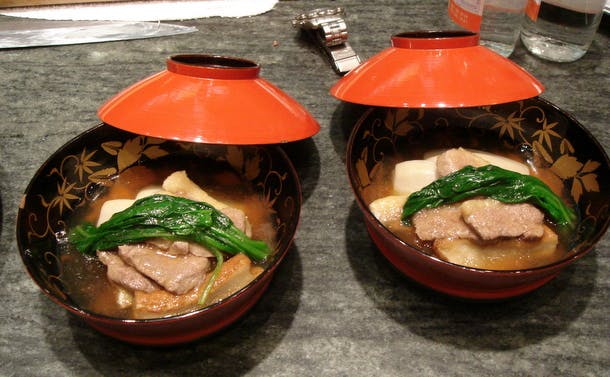
"characteristics of japanese cuisine"
A remarkable event in New York featured a forum on 'understanding Japanese cuisine' organized by top chefs visiting from Japan and three major cooking schools. The seminar highlighted the characteristics of Japanese cuisine, including the expression of seasons, engaging all five senses in the eating process, enjoying various textures and colors of food.
A remarkable event in New York today: A dozen top chefs visiting from Japan presented a forum on "understanding Japanese cuisine." Organized by three major cooking schools (New York's International Culinary Center and the Tsuji Culinary Institute and Japanese Culinary Institute of Japan), it featured demonstrations, lectures, tastings -- and a senior tempura chef dipping his index finger two knuckles deep into boiling oil to show his imperviousness to heat. Wow.
It was one of the best seminars I've ever attended on Japanese cooking -- it got me thinking about so many new things. I wanted to share notes from a terrific lecture by Chef Koichiro Hata of the Tsuji School on the characteristics of Japanese cuisine. So what exactly are the characteristics of Japanese cuisine, Chef Hata?
Expressing the seasons. Not only by rigorously cooking with seasonal ingredients, but by presenting these foods to reflect the time of the year. So in the spring, you may arrange foods to resemble cherry blossoms, while in the summer presentations could express flowing rivers or waterfalls (Chef Hata showed a photo of a tofu dish shaped to evoke a water fall).
Eating with the five senses. Taste, touch, sight, sound, smell: All of our sense come into play in Japanese cooking. Visual enjoyment is important -- a dish may be arranged sansuimori, like a landscape painting, with elements on the dish evoking a sense of perspective. The sound of sake pouring from a tokuri or hotpot bubbling in a donabe -- or even someone slurping soba noodles loudly -- all contribute to the pleasure of eating. "You enjoy the aroma of food more when you make a sound in the eating process," Chef Hata said. You bring certain dishes, like suimono (a clear soup infused with aromatics), up to your nose and inhale its perfume before you consume it.
Enjoying the texture of foods. Chef Hata gave the example of eating sushi by hand, instead of with chopsticks -- the way it should be eaten. A chef made a piece of sushi by hand, he said, and you should pick it up with your own hands and eat it. "Not that it tastes better when you use your hands," the Chef explained. But by doing so, you create "kinship" between yourself and the sushi chef -- an almost spiritual connection expressed through this food.
Enjoying the colors of foods. Red and yellow symbolize warmth and stimulate your appetite. Green (blue) is a stable, safe, quieting color. While means clean and innocent, while Black is bracing - and "the color of health." A balance of these colors in a dish is important. Chef Hata showed us photos of a dish with and without red-colored elements. It just didn't look as appetizing without the red, amazing.
